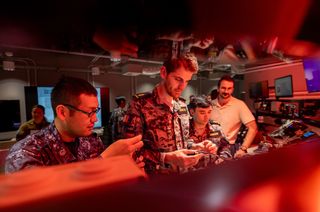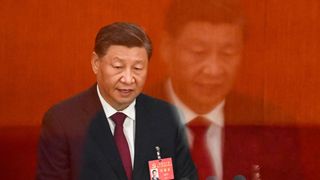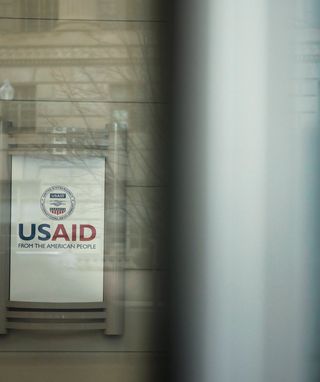The headlines
Key personnel are still shuffling through or finding their feet and strategic plans remain months away, but early indicators suggest the second Trump administration will maintain an emphasis on boosting domestic production and innovation in frontier technologies — including AI and semiconductors — and throttling the capabilities of adversaries, especially China. Biden-era priorities of safe and responsible AI were formally revoked three days into the administration and replaced with an emphasis on “AI dominance” by fostering all-out, US-led innovation. In a March 2025 letter to Michael Kratsios, Director of the White House Office of Science and Technology Policy, President Trump set out the administration’s overarching ambitions, to:
- secure the United States' position as “the unrivalled world leader in critical and emerging technologies” and maintain its advantage over adversaries,
- revitalise US science and technology enterprise, and
- ensure that scientific progress and technological innovation “fuel economic growth and better the lives of all Americans.”
What is happening behind the headlines?
Beyond strategic and personnel uncertainties, early moves by the administration signal a continued focus on domestic production, minimal regulation and an expanded set of export controls to deny adversaries access to technologies.
Across many key areas, policy memorandums or Executive Orders have been issued, but many have opened reviews into existing policies — meaning the administration’s strategic direction is yet to be formally articulated. For example, reviews into Biden-era technology export controls, outbound investment, Intellectual Property (IP) and connected vehicles policies, requested in the America First Trade Policy memorandum, were tabled to the White House on 1 April. Further, the announced ‘AI Action Plan’, likely to cover many dimensions of AI policy1 is not expected until mid-2025.
The other uncertainty is that of personnel in key posts. While some players, such as Jeffrey Kessler, who will oversee export controls in the US Department of Commerce’s Bureau of Industry and Security, have been appointed, a number of key, Trump-appointed AI and technology figures in the National Security Council have also already been shown the door.
However, the administration has sent clear signals in one key area – receptiveness to private industry. A range of announced investments centre on private industry leading the development of AI, under the direction and encouragement of the White House. The all-private, US$500-billion Stargate project — a joint venture between SoftBank, OpenAI, Oracle, and MGX to build AI data centres across the country — was announced by Trump and CEOs involved in the project on 21 January, despite it lacking any direct government investment. Similar announcements from major technology companies like Apple (US$500 billion) and NVIDIA (~US$500 billion) to invest in domestic US production adds to this private sector-led investment drive and is reminiscent of similar efforts during President Trump’s first term.
Separately, the early signals on export controls signal relative continuity, with a greater reception for concerns from industry. In mid-April, the US government advised NVIDIA that it would require licenses for its most advanced non-US semiconductor chip, the H20 — part of an effort to restrict the flows of less-advanced ‘legacy’ chips for AI development and training. As shown in Figure 1, the Trump administration’s export control movements largely echoing the worldwide trend of increasing controls on semiconductor technologies.
One notable departure from a more aggressive approach occurred on 13 May. The Commerce Department formally rescissed the Biden administration’s Diffusion for AI Framework (also known as the AI Diffusion Rule), designed to regulate semiconductor transactions across the globe, following strong criticism from US technology companies. With a stated aim to remain at “the forefront of AI innovation and maintain global AI dominance”, this change paves the way for a redesigned approach that prioritises rapid innovation over restrictive controls.
The America First Investment Policy memorandum hints that the review into outbound investment considers expanding controls beyond semiconductors, quantum technologies and artificial intelligence to include “biotechnology, hypersonics, aerospace, advanced manufacturing, directed energy, and other areas”. This, alongside a Section 232 investigation into semiconductor and related equipment imports, which raises the possibility of tariffs as an additional measure to incentivise domestic US investments, suggests other tools may be used in concert with export controls to restrict flows of all-important chips under the second Trump administration.
Key debates around the issue
Beneath the surface, certain debates — key to shaping the administration’s strategy — are already underway.
First, is the question of how to drive domestic US manufacturing of advanced technologies. The January 2025 release of Chinese company DeepSeek’s R1 model, which offered remarkable capabilities at an allegedly far lower cost, called into question the capital and compute-heavy approach of its US competitors. While private investment is being encouraged by the administration, the future of the Biden administration’s signature CHIPS and Science Act also remains uncertain. In March 2025, President Trump called the Act a “horrible, horrible thing” that Speaker Johnson should “get rid” of it, despite its bipartisan support and funding of projects across 22 states. Since those remarks, the Establishing the United States Investment Accelerator Executive Order, which calls for the creation of an office to manage the CHIPS Program Office and negotiate “much better deals” with companies that had secured grants than the prior administration, suggests a softening of approach.
The second area of debate is the US approach to export controls. The America First Trade Policy memorandum directed a review to focus on assessing the current system and advise on closing loopholes and preventing adversaries from accessing specific technologies. In this context, notable considerations include whether future export decisions will involve either consultations with industry or cooperation with allies.
This raises two important questions for the new administration: whether controls will expand to other technologies beyond semiconductors, AI and quantum, such as connected vehicles or Internet-of-Things (IoT) devices; and how it will approach controls of semiconductors, having rescinded the Biden administration’s last-minute Diffusion of AI Framework in May.
Finally, there is significant potential for the broader, volatile US-China trade war to have a distorting effect on US technology policy. Whether there are potential tariffs on semiconductor imports (the subject of a Section 232 investigation, but currently given an exemption from broader tariffs), gyrating stock markets complicating investment decisions for US companies or being altered as part of broader trade deals, the White House’s trade and technology policies remain intrinsically linked.
The implications
While Australia faces a mixed future of divergent regulatory approaches and targeted opportunities when it comes to engaging with the United States on AI, there remains clear priorities for Canberra in technology policy.
Indications from the Australian government suggest a continued focus on a risk-based approach to domestic regulation of AI — a contrast with the current, less restrictive ‘permissionless innovation’ American philosophy. Further, rising tensions in US-China technology competition suggest an increasing push to ‘pick a side’ when it comes to the nation’s tech stack. However, opportunities still abound in areas of common interest, such as international standards on AI — where Australia plays an outsized role and the new administration is already making strides.
In the area of AI development, rather than regulation, the release of DeepSeek’s R1 highlighted the potential opportunities available to a middle power like Australia in embracing such efficiency gains while, as a trusted ally, having unfettered access to high-end GPUs. Beyond the potential for entrepreneurial and economic growth, the continued demand for semiconductor chips has made Australia’s critical minerals — a noted area of interest for the Trump administration — an important asset to its future economy.
What to watch moving ahead
With early moves from the Trump administration on technology policy offering mixed results for Australia, looking to future announcements suggests important markers that will set out the White House’s strategic vision.

With the Biden-era Diffusion of AI Framework — an effort to regulate semiconductor trip transactions across the globe – now formally rescinded, a lot of focus will be on what the Trump administration chooses to do next. In the medium term, the White House's Office of Technology and Science Policy will also release the AI Action Plan, likely to set out definitive strategic direction and tangible policy goals for the administration. Finally, upcoming meetings for the Quad (hosted by India) and AUKUS will also be key opportunities for alignment in minilateral and trilateral relations with the United States.
While some of the specifics in the new administration’s technology policy remain opaque, clear markers are already emerging that offer important clarifying direction for Australia in regard to both policy and potential opportunities — across AI, critical minerals, minilateral forums and dual-use technologies under AUKUS Pillar II.
What should allies like Australia do about it?
With a new minister in charge of AI and renewed mandate following the May election, Australia has a window to establish a clear-eyed, targeted approach to its technology policy. Persistent effort to build on its existing strengths — including opportunities in critical minerals and technology risk assessments – should remain central, alongside pitching Australia as a trusted, regional hub for AI compute and infrastructure and as a base for research talent to major technology firms.
Complementing these efforts, a clear technology and trade engagement strategy with US states — a form of sub-national diplomacy — will be important. This includes building on the existing MoU with California (itself an economy larger than Australia) and forging greater connections with other centres of US economic influence like New York, and states where AI and technology manufacturing (and Australian critical minerals) are likely to boom, including Arizona and New Mexico.
Collaborative opportunities under both AUKUS Pillar II and the Quad also give Australia particularly important avenues for working with the United States, alongside close allies and partners. AUKUS Pillar II, now three-and-a-half years old, could spur dual-use technological innovation in Australia, with the 31 March launchof the latest AUKUS Innovation Challenge, focused on undersea communications and autonomy. Similarly, the Quad offers the opportunity for Australia and the United States, in partnership with India and Japan, to provide a source of continuity for the region – including on areas of technology policy. As noted during a USSC-hosted Track 1.5 Quad Leadership Dialogue in late 2024, consolidating areas of success by the Quad in technology policy – including standards, 5G telecommunications and subsea cables — and standing up responses to new dynamics in the region are likely to be key priorities.
Unpacking Trump 2.0










